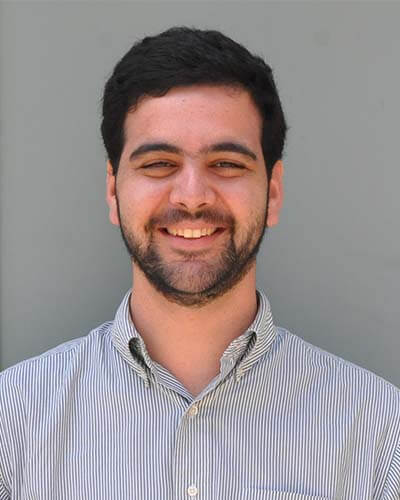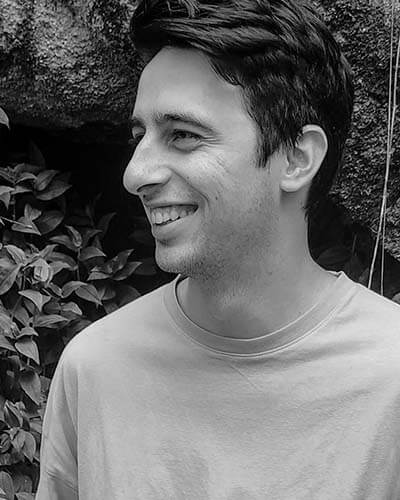
ARCHITECTURE THESIS OF THE YEAR
ATY 2021
Meet the Winners
FIRST
Naomi Vallis
New Zealand
ATY2021-7752
SECOND
Franco Ferraro Ravettino
Peru
ATY2021-8257
THIRD
José Gonçalves
Portugal
ATY2021-8104
First Prize winner

Naomi Vallis
Kia ora! (Hello)
My name is Naomi and I completed my M(Arch) Prof from 2020-2021, at the University of Auckland in New Zealand. I was also shortlisted for the Te Kāhui Whaihanga Resene Student Design Awards for the work I produced for my thesis.
During my Bachelor’s Degree studies, I was fortunate enough to be tutored and mentored by Dr. Deirdre Brown the Deputy Dean of the Faculty of Creative Arts and Industries, at the University of Auckland, and Dr. Ross Jenner my architectural theory tutor and thesis supervisor first introduced me to the notion of the ‘Architectural Monster.’
As an undergraduate I for Dr. Jason Ingham, Head of the Department of Civil and Environmental Engineering at the University of Auckland, as a research assistant from 2017-2019, and in 2020-2021 worked part-time as a design tutor, running my own design paper, “The Architectural Monster”, teaching students about architectural hybridity in different suburbs in Auckland city.
I currently work as a Graduate Façade Engineer at Babbage Consultants in Auckland New Zealand.
I was motivated to write about the architectural monster as a means of discovering my own cultural identity as a first-generation migrant. At the age of 4 I immigrated from India to New Zealand with my family, and whilst growing up I often found myself compelled to explore fragments of my own heritage and culture in the new context.
During my Bachelor’s degree, I was drawn to design papers that had an emphasis on people and culture, which later in my thesis I explored through the notion of the Architectural Monster. I used my own experiences but also commentary of other migrants to understand how the architectural monster has come to be in our built environment.
Due to the highly conceptual nature of the thesis, I found my methodology of making, collage, useful in testing what the fusion of architectural styles could look like if a greater emphasis was placed on cultural hybridity in architecture.
Through my thesis, I have come to reshape my perspective of the role of the architect, which should be one to acknowledge and celebrate the diversity and architectural monsters that emerge.
This notion can be adopted by all designers with the focus to create architectures that are relevant to all people and communities. In an increasingly diverse world, it is ever more important to design in ways that cater to multiculturalism. Hence, with the continuation of the global migration of people and culture, hybridity will characterize the present and future of our society.
Participating in worldwide architectural competitions provides an opportunity to display your own design work on a global platform. It offers you a chance to view the work in the global context and understand the areas where you may make a meaningful contribution that will help foster positive progress.
SECOND Prize winner

Franco Ferraro
I went to school at Universidad Peruana de Ciencias Aplicadas in Lima, Peru. It was a truly enriching experience from the beginning; It was the first time I found myself in an environment where friendship and competitiveness were so related.
First-year was when I understood design was kind of straightforward and intuitive for me. However, as a methodical person, it was frustrating not being able to find a clear, orderly way of designing. So, my school years were all about grasping how I personally worked as a designer.
Later, I understood that good design comes from critical thinking-led iteration that results in a clear set of design strategies. My friends and I talk all the time about this. I had the best teachers, but I’m pretty sure my education wouldn’t have been the same without the wonderful people I got to call my classmates.
I graduated First in my class and the thesis I presented to this contest won “Summa Cum Laude”, the top grade of my school awards.
In 2018, I co-founded my firm, Franco Ferraro Arquitectura, and started working on educational, retail and residential projects through contests and family/friend clients. Together with my partner, Ana Lucia, we have achieved a fun and pretty effective work environment that has been bringing unique, different, and rewarding projects to our drawing table.
Coming next for me, in 2022, I will be studying a master’s degree in Business for Architecture and Design at IE in Madrid.
I have always been fond of art. I think I even ended up in architecture school through this affinity: but getting to my final topic was not easy. I initially chose to do a mixed-use building; they were appearing all over magazines at that time. I was caught in a bad personal period and had to retire from the thesis course. This was for the best though, because I realized that for my thesis, I had to do something I was really interested in and not just what I saw in architectural media.
Next term I chose to do an art school not only because of my love for art but because I was always curious about how certain periods in time had produced far more interesting artists than what I was seeing in Lima in the present. So naturally, I thought I could try and solve this with an architectural proposal.
I started researching deeply about learning methods in the Renaissance, and Modern era mainly, and was pretty convinced most of the artistic talent came from outside the classroom and intense living. My advisor was great, since he directed me towards the work of Hermann Hertzberger and Bernard Tschumi and was immediately caught with what they called “In-Between Space”. Then it was clear: Design an art school that is all about learning in spaces where the unexpected is expected to occur.
Architecture means everything to me because it has given me the opportunity to put my creativity in the service of others. And doing that has taught me not to be selfish. That’s why our firm’s portfolio is so diverse. Every task comes from a unique set of people, environments, ambitions, dreams, and intentions, so it just makes sense that all this is what ultimately shapes a project. We are just the medium. We shape experiences, outcomes and lives, but we must not forget that most are already there. Our role is to pay attention to what exists and what needs to be done instead of doing what we want to do.
Architectural competitions give professionals the opportunity to share personal discourses, but most importantly they also expose them to discourses that are not theirs, and most of the time, to discourses they do not necessarily agree with. This is great because conflict is the most effective way to kickstart debate, and debate brings learning and learning growth.
Every posture counts. The best ideas are made from collective thinking. Nobody changed the world alone, so thanks to The Charette for giving me a platform to share what I’ve been working on, and hopefully I can hear about people that disagree with me!
Third Prize Winner

José Gonçalves
My name is José Gonçalves I did a masters in architecture in the Lisbon School of Architecture as well as a semester at the Oslo School of Architecture and Design. Since 2019 I collaborated with the Cascais Municipality in developing the Bairro Marechal Carmona Urban plan as well as various architecture projects inside and outside of it. Currently, I am working at NAINOA architecture and interiors developing several residential projects.
The idea for the project came during my 4th year in university when I did an exchange in Oslo that made me observe that the same architectural stranglehold between waterfront cultural developments and irreplaceable industrial buildings existed in a similar way to Lisbon: They were both port cities and they both had important infrastructure in the way of cultural waterfront development. This prompted me to investigate other cities that faced similar issues and attempt to envision infrastructure as an integrated part of urban life instead of being removed from it.
Architecture, ultimately, is the cultural expression of space. It is first and foremost a service of understanding and compassionately responding to the spatial necessities of an individual or group of individuals. It is a practice upon which our responsibility relies in part on the understanding of these necessities and on another part the outputting of a correspondent spatial manifestation as a response.
Too many architects deliberately muddy these concepts and definitions to the detriment of the profession just to ultimately convey personal or collective expressions of art.
As a result (and thanks to the increasingly complexifying building industry), architects tend to arrogantly assert their position as merely cynical creators, on the sidelines, away from builders, engineers and the general public.
This personal assertiveness on the basis of murky and befuddled concepts has an immense rippling effect on the publics’ general perception of architects: No one knows why to hire one.
This means that in an ever-changing and complexifying world architects should not refrain from connecting with the general public as often as we can as well as clearly explaining our added value: As being the people’s voice in manifesting space.
In my opinion, as a young architect, it is the easiest, most direct and most freeing way to express any ideological or personal conviction about anything related to the profession.
Every posture counts. The best ideas are made from collective thinking. Nobody changed the world alone, so thanks to The Charette for giving me a platform to share what I’ve been working on, and hopefully I can hear about people that disagree with me!